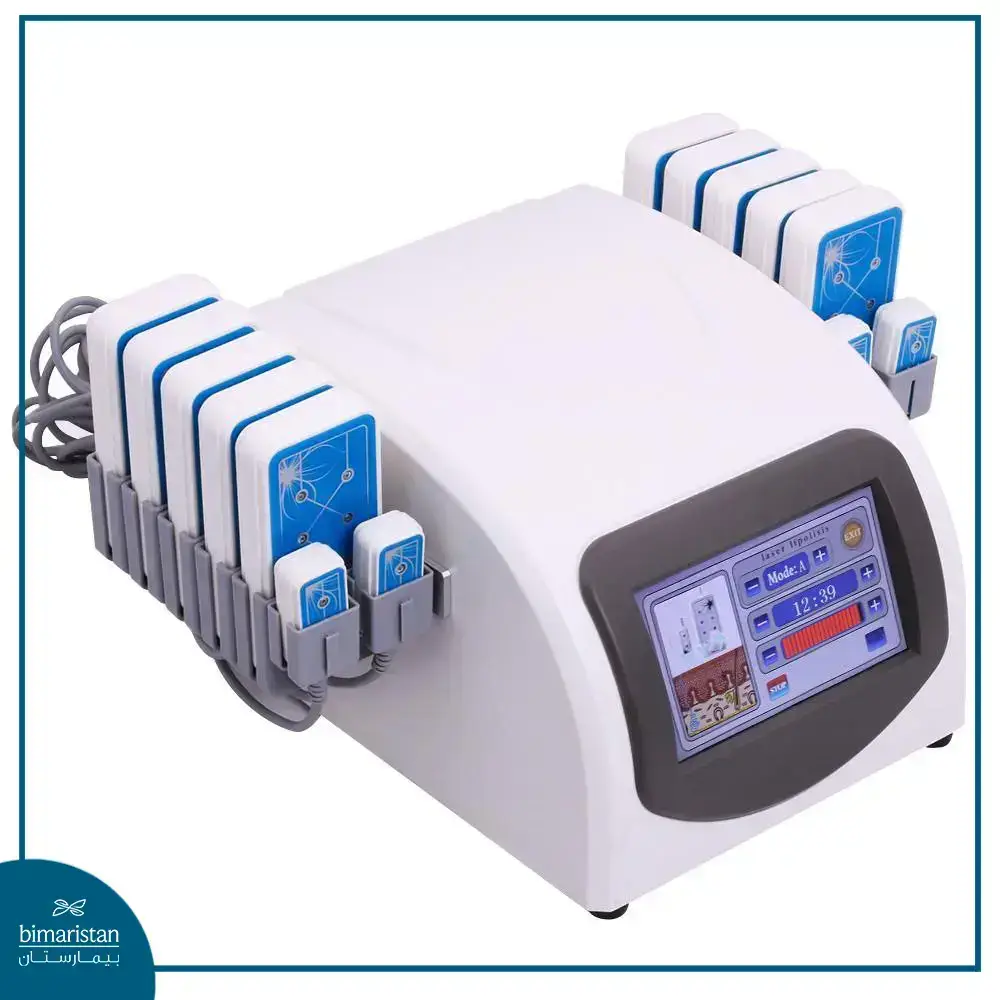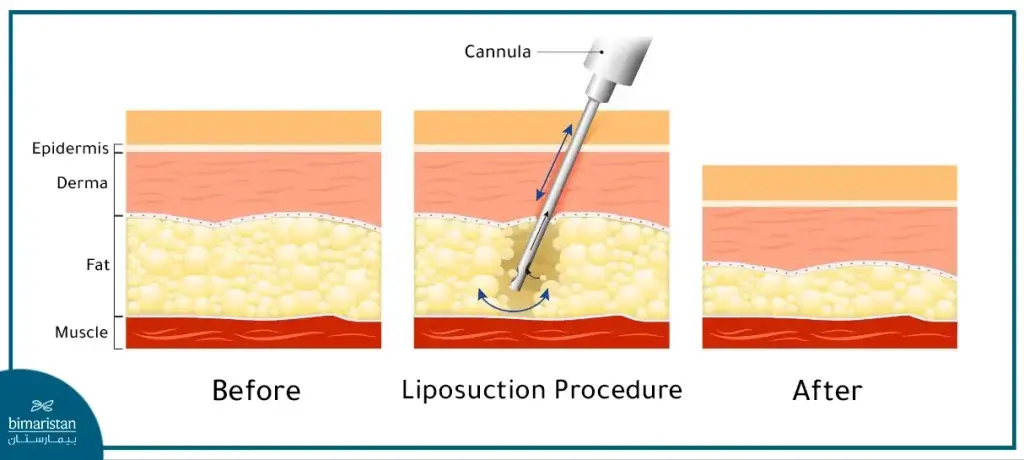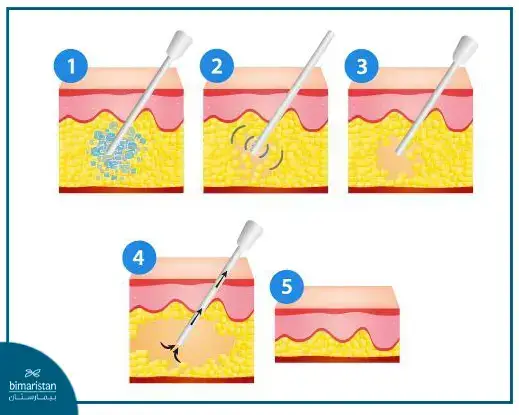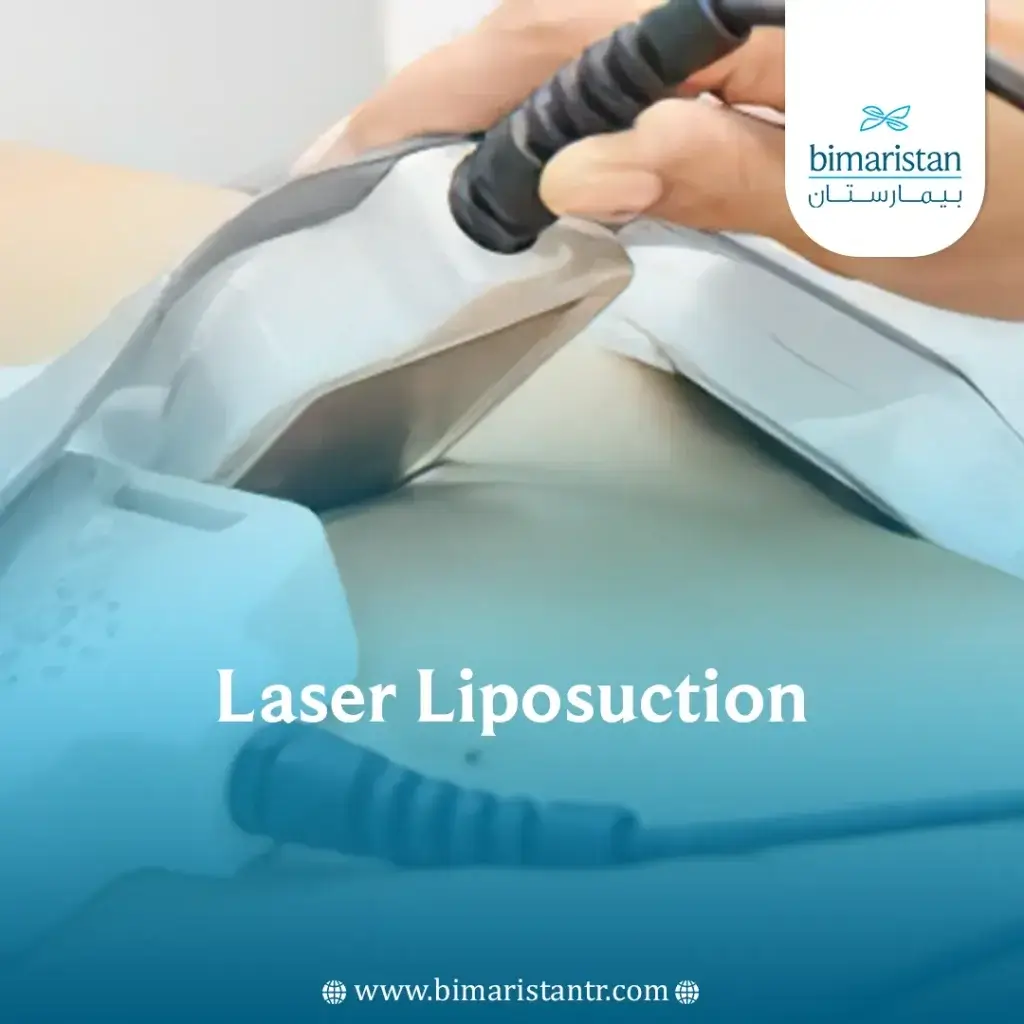Laser liposuction is considered one of the common cosmetic procedures that target fat in specific areas of the body, it helps improve the body’s appearance and give it tight skin free of the surgical scars associated with traditional surgeries, follow us in this article to learn about the technique of this procedure, its most important features.
What is laser liposuction?
Laser liposuction is a minimally invasive cosmetic or therapeutic procedure that uses laser energy to heat and remove fat cells from different areas of the body permanently with a reduced risk of sagging skin afterward.
Laser liposuction is considered a safer, gentler and less invasive way to get rid of fat compared to traditional surgical methods.

Areas of the body targeted in laser liposuction
Laser liposuction is a great tool that can target small pockets of excess fat in a wide range of areas, especially troubled areas that have traditionally resisted diet and exercise.
Common treatment areas include:
- Belly
- Buttocks
- Thighs
- Knees
- The upper part of the arms
- the neck
Laser liposuction can also be used to tighten the skin in areas that do not necessarily require fat removal, such as the neck, arm, and knee.
Types of laser liposuction
There are two types of laser lipolysis that can be chosen depending on the patient’s needs and weight:
Non-surgical laser lipolysis
Laser liposuction can be performed in the doctor’s office and the session takes about half an hour to an hour depending on the targeted area.
The doctor attaches laser tools to the area to be treated and then calibrates the laser beams to a specific wavelength.
Although the device has soothing cooling features, it emits heat that penetrates the patient’s skin and heats the fat cells underneath.
Heat damages the membranes of the fat cells, which begin to die.
The decomposed fatty tissue is gradually removed, and the fatty acids are released through the lymphatic system and then processed in the intestines to be finally eliminated from the body through urine.
In this procedure, the patient is not exposed to any anesthesia and can return to his normal activity immediately after the session.
For most people, one session of laser lipolysis is sufficient to obtain the desired results of sculpting.
However, since the 25-minute session destroys and removes only about 24% of the fat cells in the targeted area, some people choose two or three treatment sessions to achieve satisfactory results.
Minimally invasive laser lipolysis
In minimally invasive laser liposuction, the doctor uses a local anesthetic in the desired area while the patient remains awake during the session, which may last from 30 minutes to three hours.
Once the skin is numbed, the doctor makes a small incision and inserts the laser into the fatty tissue under the skin, which dissolves the fat cells.
Once the fat is liquefied, the doctor uses a narrow tube measuring 1mm to suction the fat outside the body.
In most cases, patients can resume their activities a day or two after the procedure, but patients should expect some swelling for several weeks after the procedure, so it is suggested that they wear compression clothing after the session to reduce possible swelling.
Benefits and riskss of laser liposuction
Benefits of laser liposuction
- Uniform skin contraction; The tissue contractile effect prevents sagging and circumferential deformities after liposculpture.
- The recovery period after the procedure is minimal
- Laser liposuction can be applied to any area of the body
- Possibility of careful revision of unsatisfactory results in previous liposuction treatments
Risks of laser lipolysis
The risks are usually minimal and complications associated with the procedure are uncommon.
In the case of non-surgical liposuction, the patient may temporarily face the following:
- redness
- swelling
- hardness
As for minimally invasive laser liposuction, it may cause side effects such as:
- Hematoma; Blood pooling under the skin
- Scarring
- Redness and swelling
- Infection at the site of the incisions made
Conditions for laser liposuction
Good candidates for laser lipolysis include people who:
- They enjoy good general health
- They have realistic expectations about results
- Non-smokers or quit smoking weeks before treatment
People with the following conditions should avoid laser fat treatment:
- Pregnancy
- Diabetes
- Multiple sclerosis
- Abnormal tissue growt
- Use a pacemaker or defibrillator
- The presence of heart or liver disease is subject to special consultation
The difference between laser liposuction and regular liposuction
Both procedures are capable of removing stubborn fat from almost head to toe, but there are some more notable differences between traditional liposuction and laser liposuction to consider, including the following:
- Anesthesia: While traditional liposuction often requires general anesthesia, laser lipolysis can be performed with local anesthesia, significantly reducing perioperative risks.
- Incisions: Fat is removed using laser energy, which makes removal much easier, the incisions made are smaller than the incisions of regular liposuction, and this leads to the formation of less visible scars.
- Procedure time: While liposuction takes approximately 3 hours, laser liposuction takes about half an hour to an hour per session.
- Recovery time: Patients who undergo laser liposuction enjoy a shorter and more pleasant recovery period than those who choose traditional liposuction.

The difference between laser liposuction and VASER
Both VASER and laser liposuction are considered highly effective and safe procedures.
The main difference lies in the mechanism of performing the two procedures.
Vaser liposuction uses two basic steps to remove fat cells from specific parts of the body:
- Emulsification: In this step, the doctor injects a special saline solution to fill the area to be treated, this solution numbs the area and expands the fat cells, the importance of this stage is that it preserves other healthy tissues and facilitates the process of removing fat.
- Ultrasound: After the successful emulsification of fat cells, an ultrasound probe is inserted under the skin, this probe acts as a vacuum that suctions out the emulsified cells.

Costs of laser liposuction in Turkey
Choosing a qualified surgeon and a reliable center plays a major role in obtaining satisfactory results that make the patient happy, and in Turkey you can find this at costs commensurate with the quality of the experience.
There is no specific price for laser liposuction, as the cost depends on the area of the body being treated, but the prices of liposuction operations in Turkey range about $3,000, taking into account the mechanism of the procedure used.
Laser liposuction is not a way to lose weight for people who suffer from excessive obesity, it is a procedure that aims to improve body proportions and general visual appearance and helps get rid of stubborn fatty pockets in different areas of the body while tightening the skin and soft tissues.

